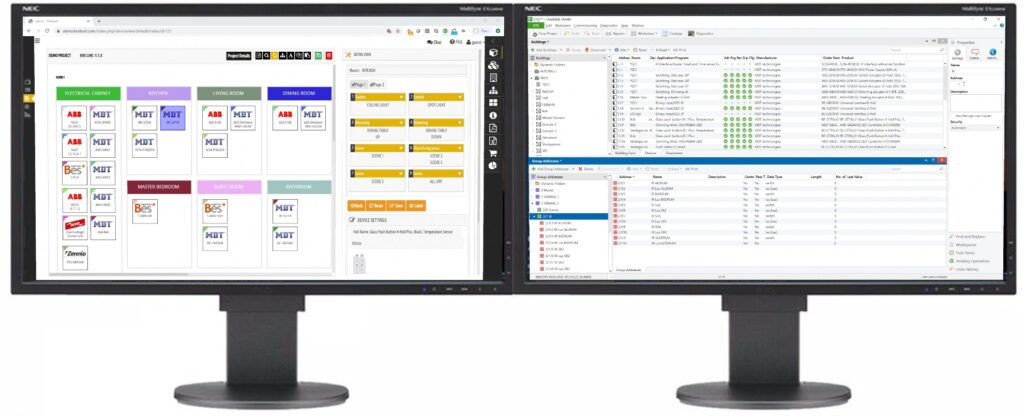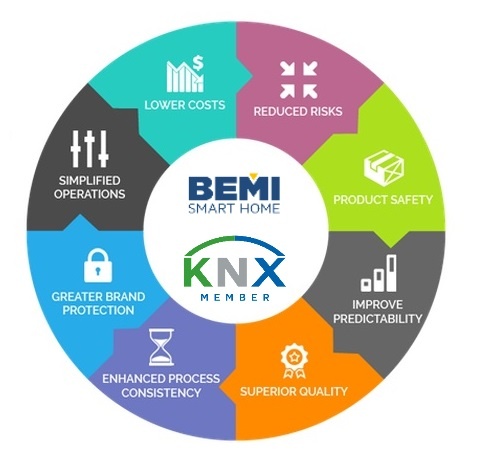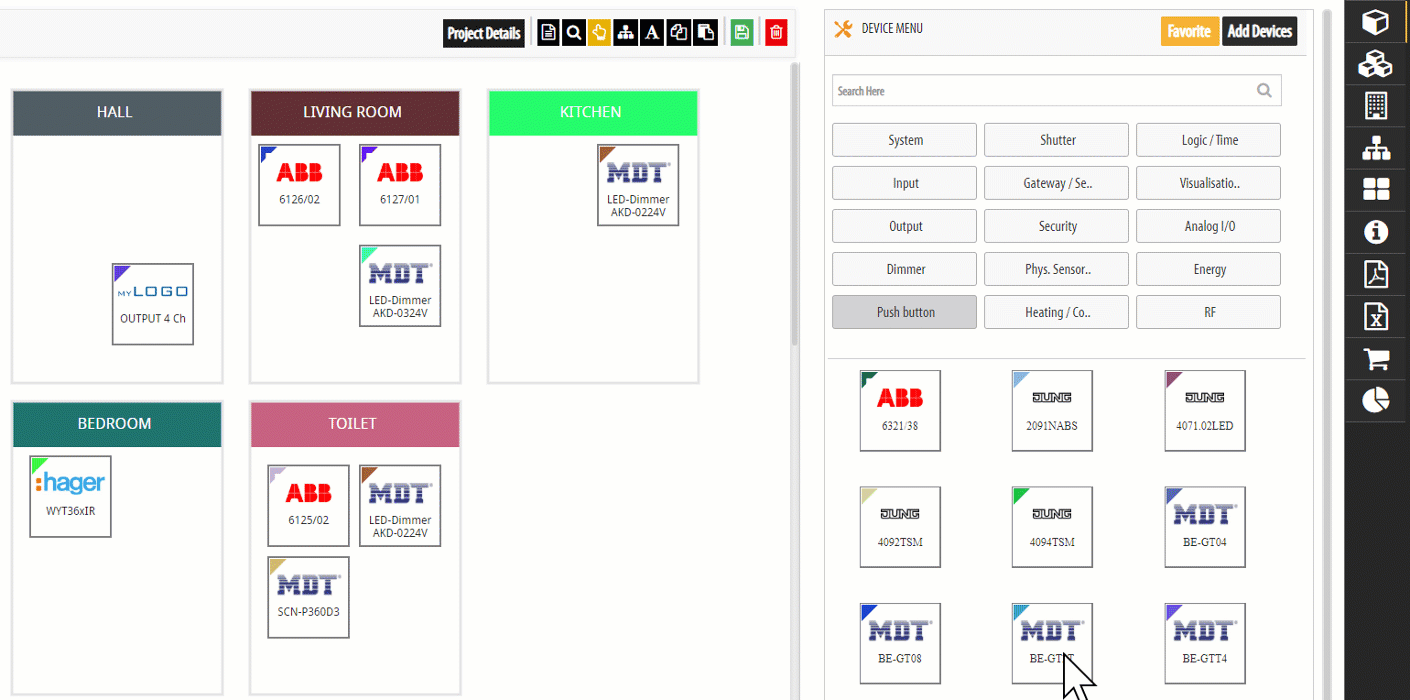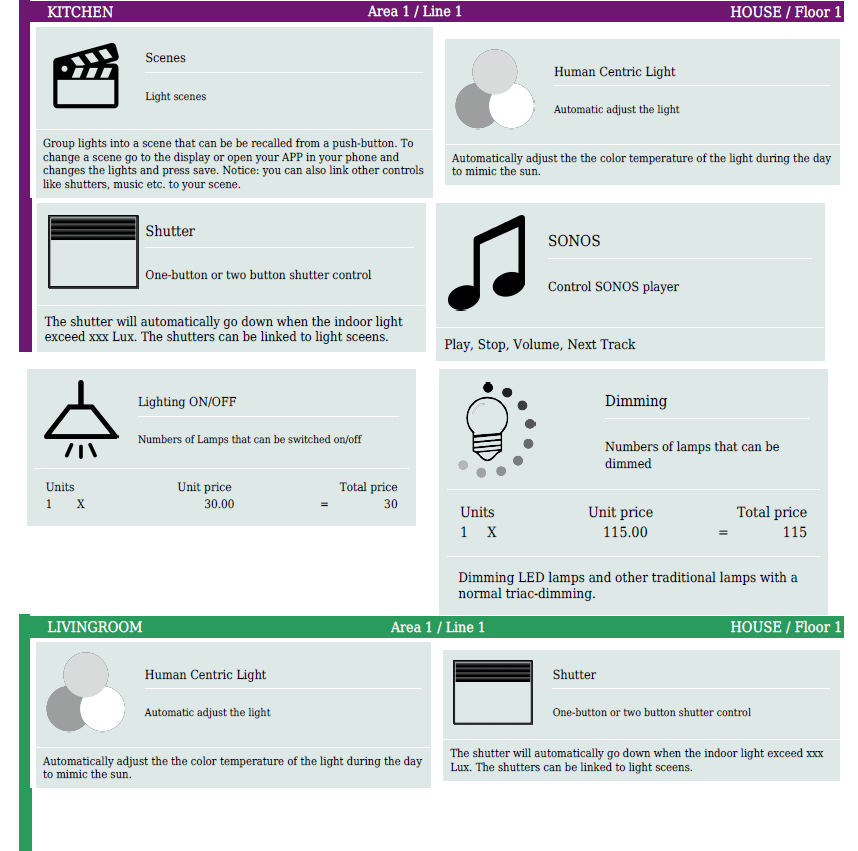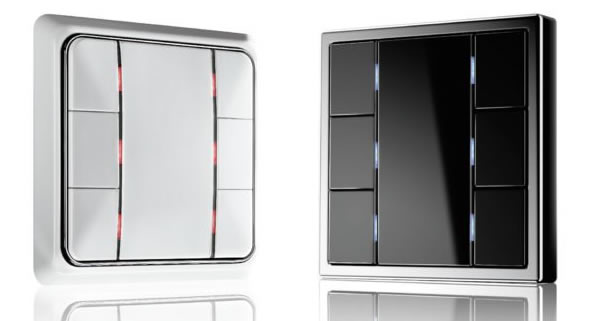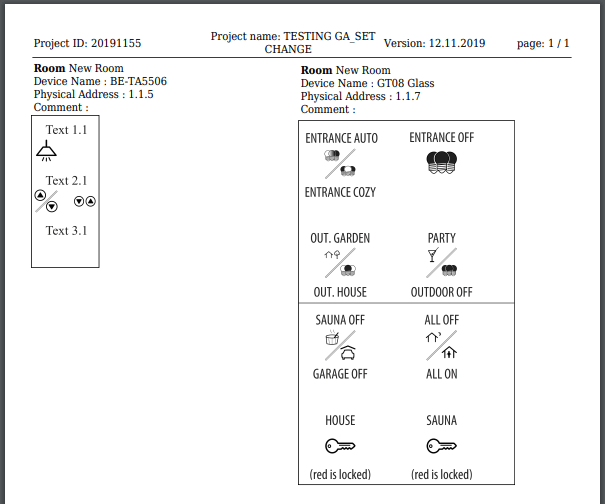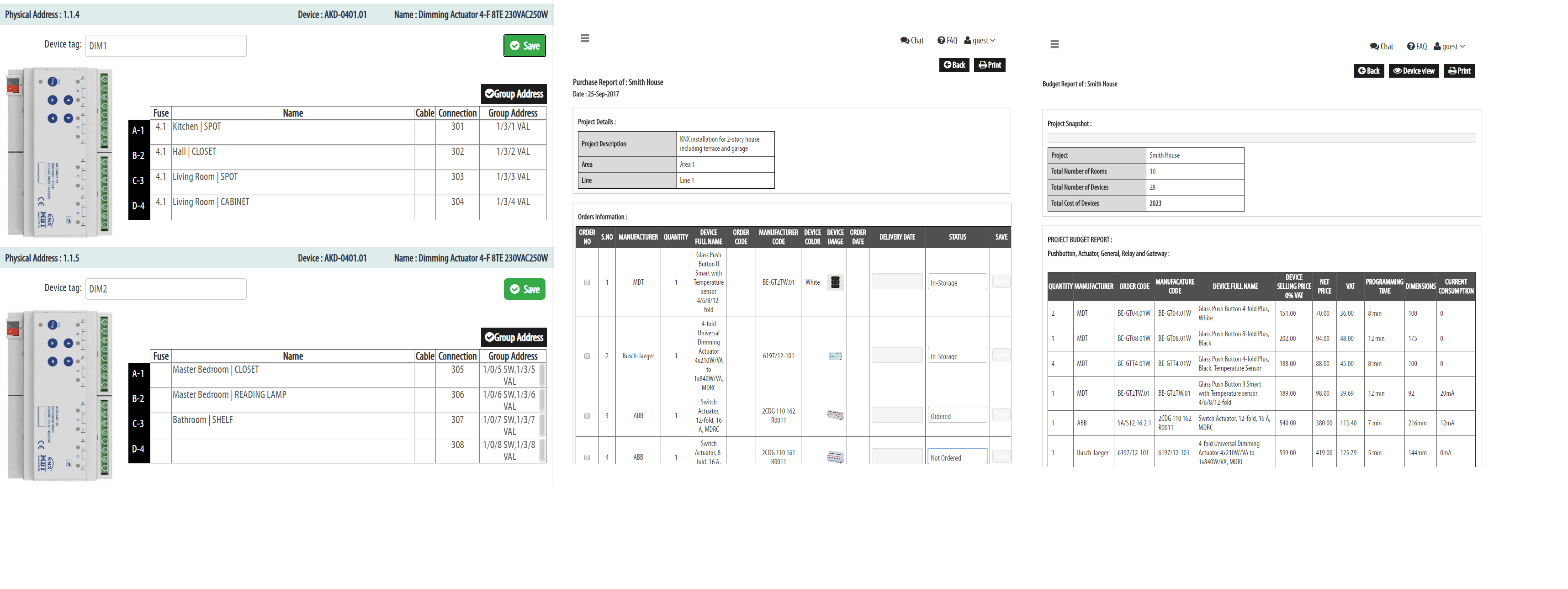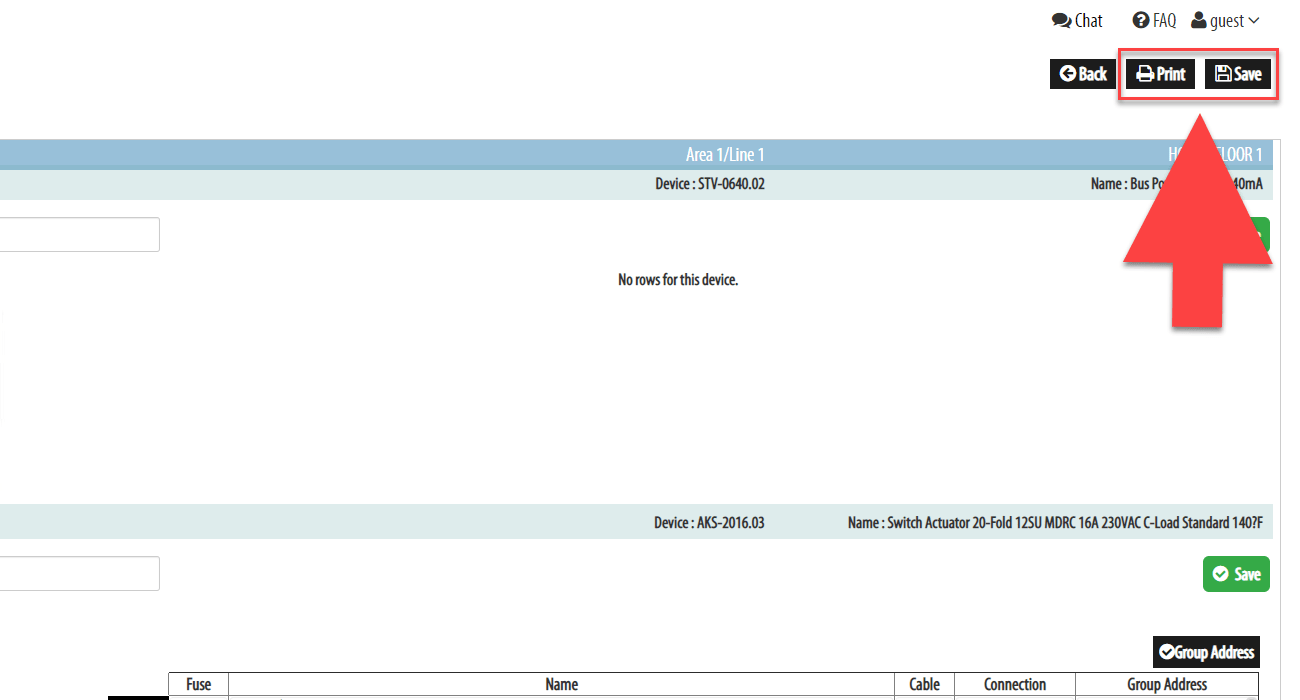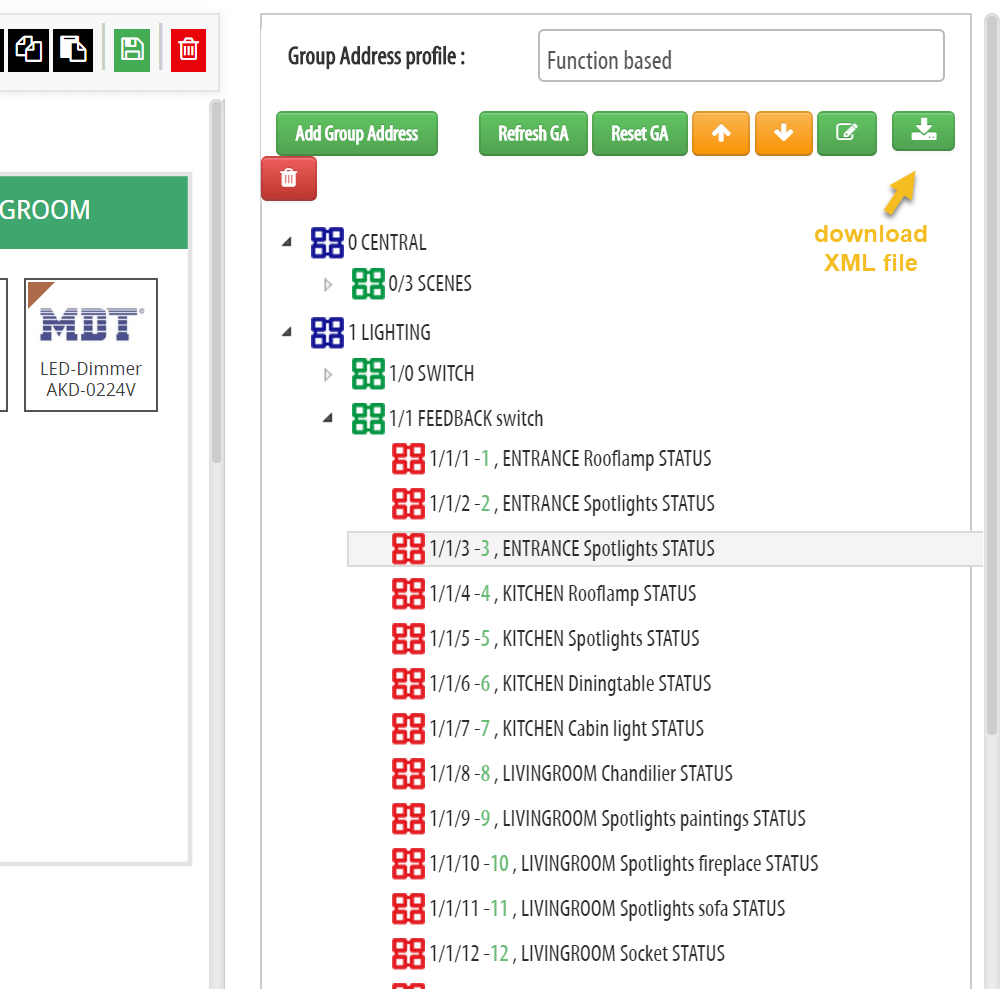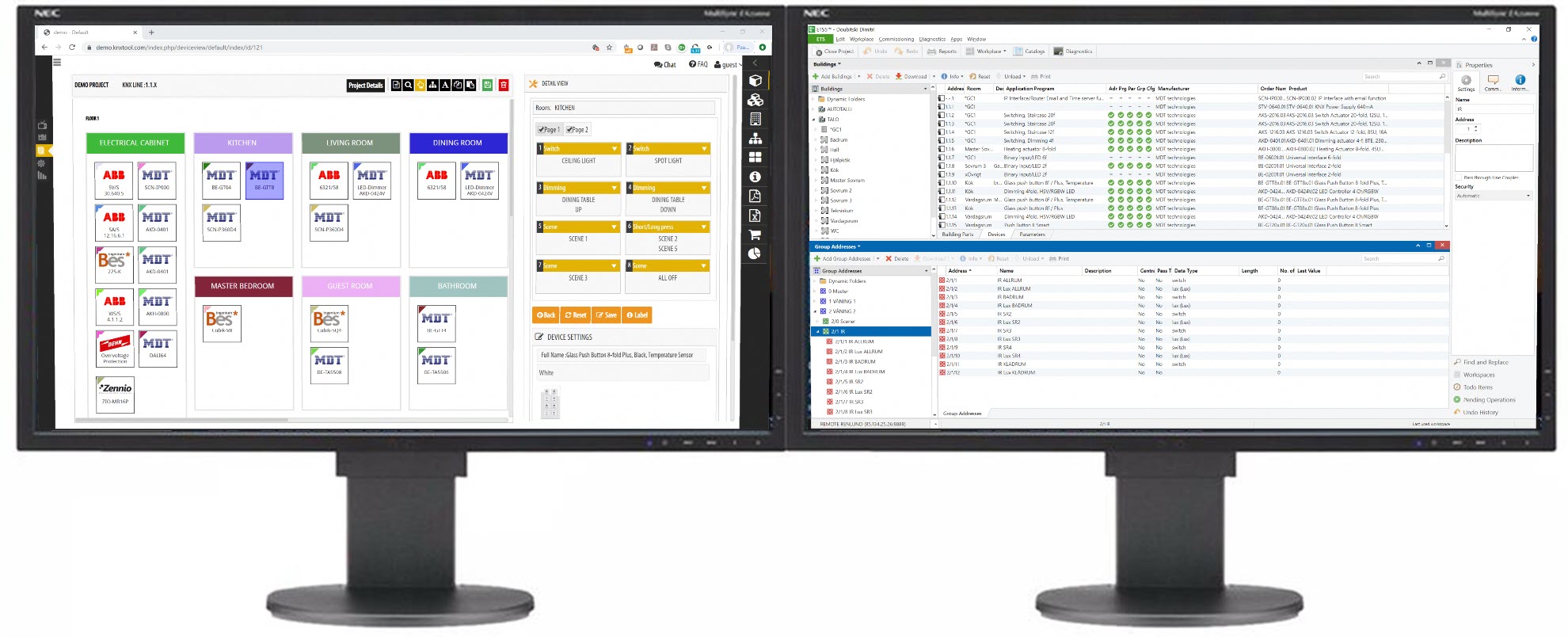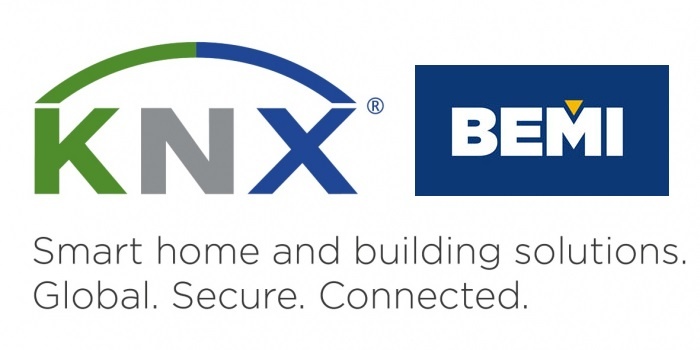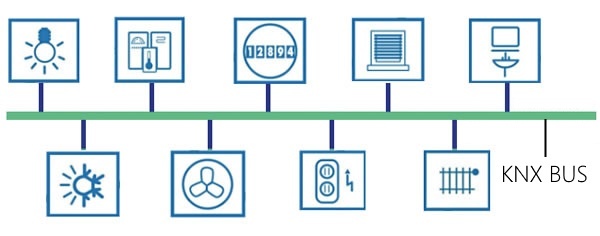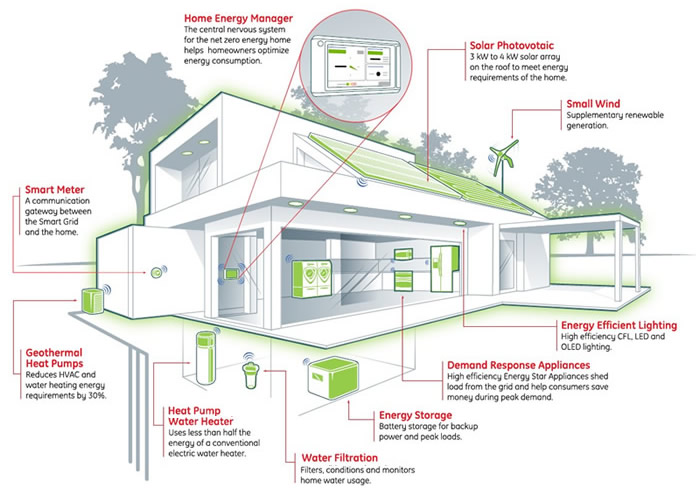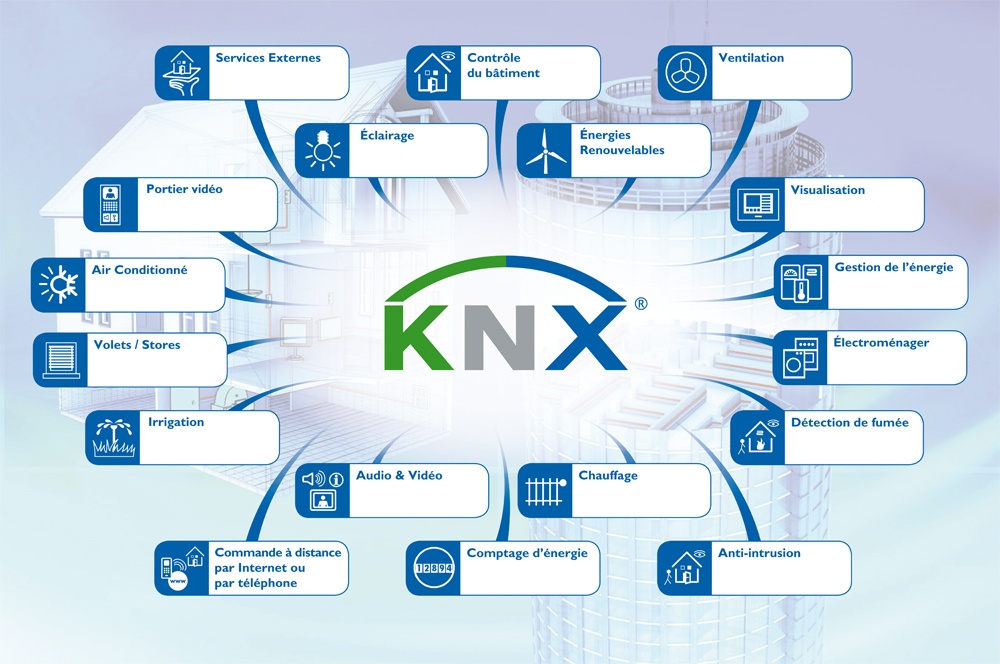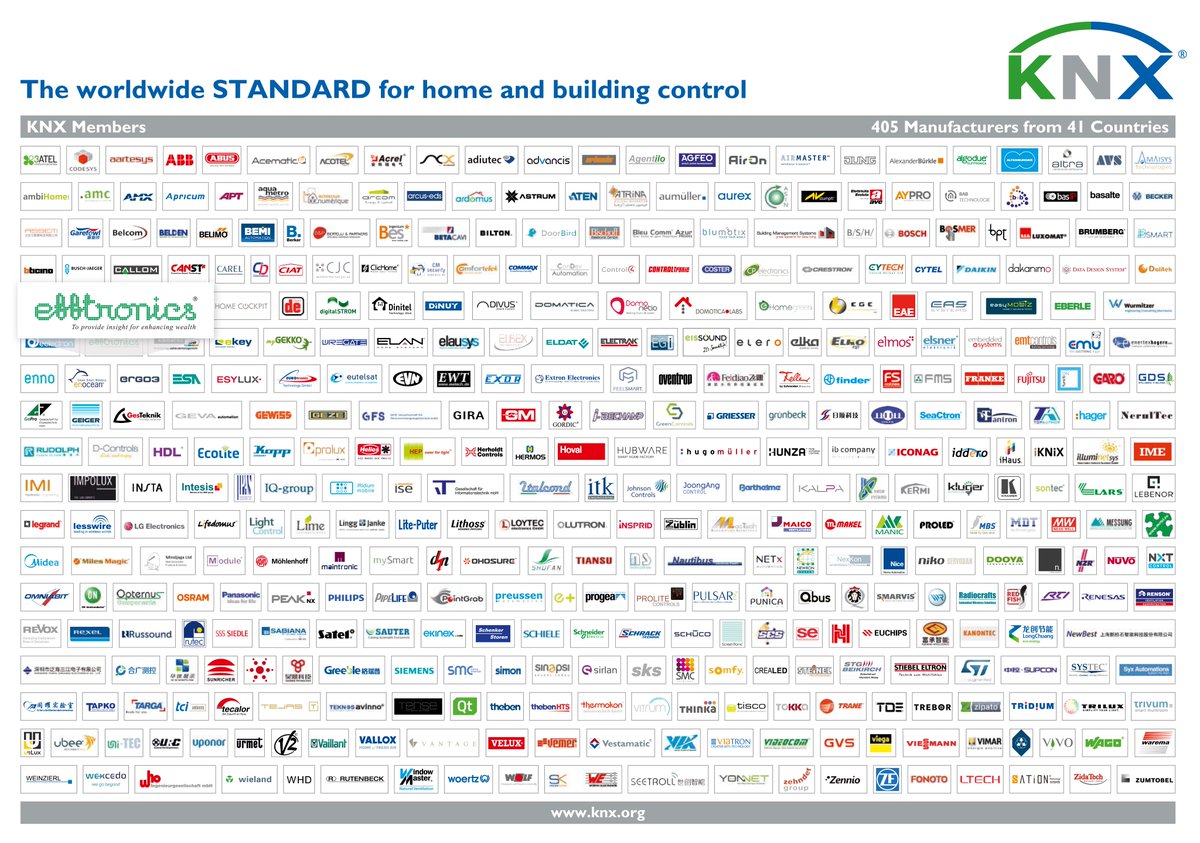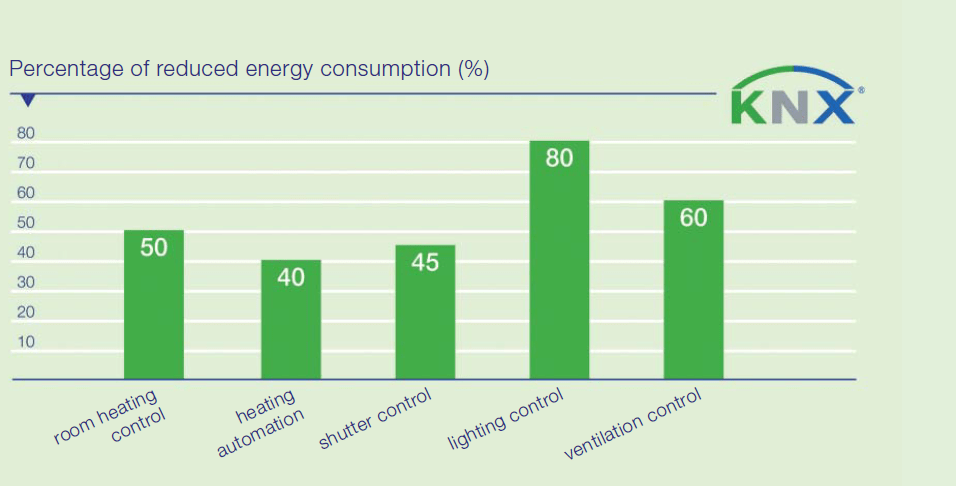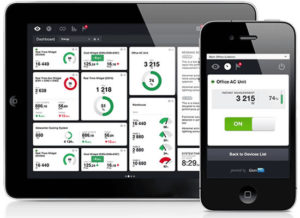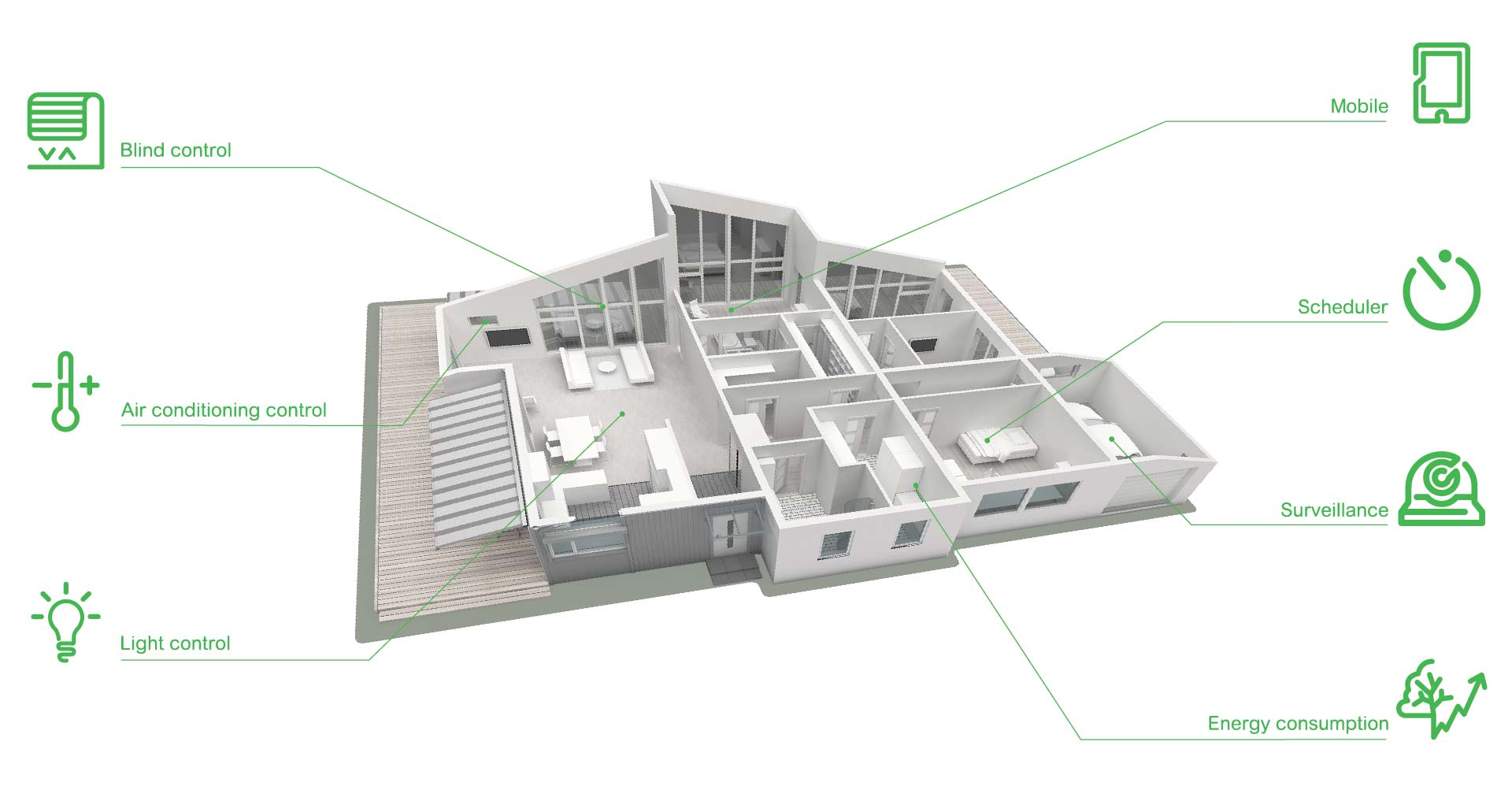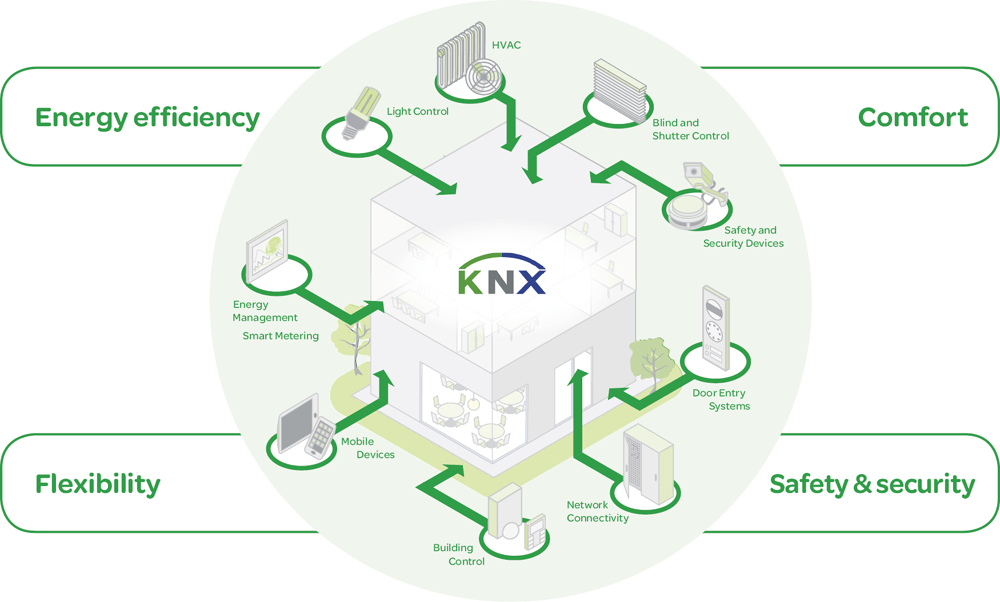Correct design, a structured approach and well-organised project management are very important.
– KNX Association
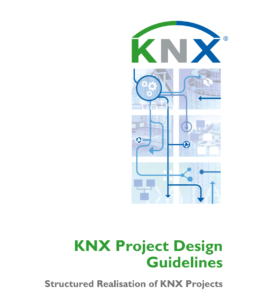 As stated in the official KNX Project Design Guidelines from the KNX Association, how you design, plan, structure and manage your KNX system installations are all important aspects to guarantee a successful outcome.
As stated in the official KNX Project Design Guidelines from the KNX Association, how you design, plan, structure and manage your KNX system installations are all important aspects to guarantee a successful outcome.
According to the recommendations from the KNX association, you need to have a reliable, systematic and streamlined approach — starting from the very first interaction you have with your customers during the initial design and planning of KNX systems — all the way through to programming KNX systems with ETS and providing all necessary documentation needed during the final handover at the completion of each project.
Do You Have a Structured and Streamlined Approach for Your KNX System Installations?
First, lets establish what ‘streamlining’ and ‘structuring’ is and why you need to streamline and structure the workflows, processes, tasks and activities needed for your KNX installations.
Streamlining or structuring activities is a process (or system) you can use to help simplify, organize and manage all work-related tasks and documentation for your KNX installations.
It is used by successful businesses and organizations (from all industries) all over the world to help improve productivity and profitability for everything they do — and to also make sure all aspects of an operation run as smoothly as possible.
Streamlining and structuring workflows, processes, tasks and activities require the usage of modernized techniques, technology and other possible approaches to produce a desired outcome.
How Will Streamlining and Structuring KNX Project Workflows Help?
An efficient and proven streamlined/structured process always results in fewer errors, less delays and higher profit margins for any type of project or business. And can be easily replicated and relied upon to produce similar results in the future.
Being able to streamline and structure all of the important tasks needed for any type of KNX system integration (whether big, small, commercial or residential) from start to finish is absolutely essential if you want to hand over a properly functioning KNX system to your customer which is on-time, on-budget, profitable and fully documented to protect your work.
How Effective and Cost-Efficient is Your Current Method for KNX Design and Planning?
If you are an experienced KNX installer/integrator, you probably already have a checklist of tasks or a set of processes you go through every time you start work on a new KNX project.
For example, you may use the same software, tools or steps each time when you:
-
contact a new potential customer
-
sell KNX to your customer
-
design and structure KNX systems
-
keep track of time and KNX products needed for a project
-
generate reports and documents
-
resolve customer issues
-
etc.
And you’ve likely come up with and established these processes based on your own idea of what works best for you and your business.
But are your current processes for your KNX installations as effective as they could be?
Are you using the latest strategies, technology and tools available to help you achieve better, faster and more profitable results for your KNX installations?
Inefficient workflows and processes can lead to much more than just poor results for one single KNX installation.
It ultimately leads to:
-
Continuously missing deadlines
-
Increased costs and time to get things done
-
Over budget
-
Unhappy customers
-
A bad reputation as a KNX installer
-
Reduced productivity
-
Reduced profit margins
-
More stress
-
Etc.
That’s why it’s so important to invest time into analyzing, improving, streamlining and structuring ‘how you do things’ if you want your KNX projects to run smoothly each and every time.
When you implement better design and planning processes for your KNX installations, you will undoubtedly see better results in the form of:
✔️ A proven, time-saving system you can replicate and rely on to produce high quality results and positive outcomes as expected.
✔️ Increased productivity and profitability for every KNX project.
✔️ Happier customers.
✔️ More positive reviews about your business.
✔️ More job referrals.
Try the only ALL-IN-ONE KNX Design and Planning Tool to Help You Streamline and Structure All Aspects of a KNX Project from Start-to-Finish.
The KNX Design and Planning Tool by BEMI is built specifically for the KNX industry and has proven to help KNX installers save time, money and effort with all stages of a KNX project — from the initial design, planning and development stages, through to programming KNX installations using ETS and final project reporting.
Design, Plan and Customize Personalized KNX Systems in Minutes with Drag and Drop
The time efficient and easy-to-use drag & drop drawing board of the KNX Design and Planning Tool allows you to design a wide range of fully customized KNX systems in minutes for your customers.
You can create a diverse range of different types of Building structures for your KNX projects — then start adding individual devices to each room, area or space by simply dragging the device over to the drawing board.
Help Your Customers Visualize The Possibilities and Benefits of a Fully Customized KNX System
The Design and Planning tool provides a unique and professional way for you to inspire and motivate more customers (and building planners) to install KNX systems — by helping them visualize and understand how KNX technology will be best for them.
The KNX design and Planning Tool automatically generates easy-to-understand documents which contain detailed function descriptions (and images) of a KNX system — which explains how the system will work and benefit them.
This lets you produce detailed and visually appealing KNX proposals for your customers that will help you sell a more diverse range of projects as a KNX installer.
Get instant printouts which contain a full and comprehensive overview of the features, functionality, capabilities and limitations of their customized KNX system without any confusion.
Make Sure End-Users Know How to Use and Operate Their Personalized KNX System with Professional Labels
Have you ever experienced the following problem as a KNX system integrator when it comes to KNX push-buttons?
Someone has trouble using and controlling the functions or features of their KNX installation because they have forgotten (or do not understand) how to use the push-buttons correctly?
This typically requires additional work needed on your part just to keep the customer happy and can sometimes result with the customer being dissatisfied with your work — even though it was not your fault.
Now you can avoid any end-user confusion and disappointment with professional KNX labeling for push-buttons, switches, sockets, RCDs and more.
The convenient in-built labeling feature allows you to create professional looking labels for all switches, sockets, push-button sensors, RCDs, etc. which can include your company logo and a combination of symbols and text for easy identification by users.
Save Time, Money and Hassle with Instant Printouts of KNX Documentation Automatically Generated by the KNX Tool
Now you can instantly produce a wide variety of professional documents for all KNX projects which can be used for project budgeting, product ordering, installation guides, etc.
No more out-dated, time consuming and amateur looking methods such as the use of excel spreadsheets or basic word documents. Now you can gain instant access to all KNX documentation needed for your KNX projects with a click of a button.
Instantly print easy-to-follow manuals (with images) which can be used for seamless KNX installations — and to show end-users how to control and manage all automated features and functions of their KNX system.
You can also create required documents for such things as E-reports and building inspections — as well as all necessary documentation and labeling needed for future adaptions and further additions to the KNX system.
These important KNX documents are automatically generated and updated by the KNX Design and Planning Tool when you are creating, setting up and customizing your projects.
Ensure Faster and More Reliable KNX Programming in ETS
A well designed KNX Group Address structure with proper naming is essential for trouble-free programming and debugging when using ETS.
The specialized KNX Group Address feature gives you the ability to plan and design your entire KNX system — then have all KNX group addresses (with all relevant channel text, ID’s, Tags etc.) ready to be imported into ETS when its time for programming and commissioning your KNX system.
After device configuration has been customized and completed using the KNX Design and Planning Tool, all you need to do is simply download the KNX Group Address structure file that is created and updated automatically for you — then import the XML file into ETS for final programming.
Overview of How the KNX Design and Planning Tool Works
✅ EASY-TO-USE DRAG AND DROP DRAWING BOARD TO DESIGN KNX PROJECTS
✅ SPECIALIZED KNX GROUP ADDRESS FEATURE READY TO IMPORT DETAILS INTO ETS
✅ INSTANT REPORTING AND PRINT-OUTS OF ALL NECESSARY KNX DOCUMENTS
✅ COMPANY BRANDED LABELS FOR KNX PUSH-BUTTONS
✅ PLUS A WHOLE LOT MORE!
KNX is internationally recognized as the worldwide STANDARD for all applications in smart home automation and building control — including lighting, blinds & shutters, security systems, heating, ventilation, air conditioning, monitoring, alarms, water control, energy management, smart metering, household appliances, audio/video and more.
ganized.

